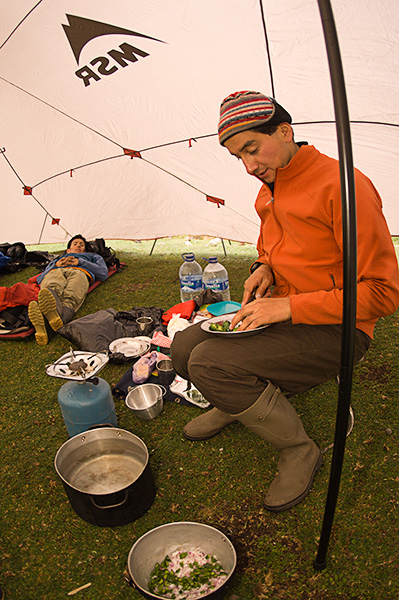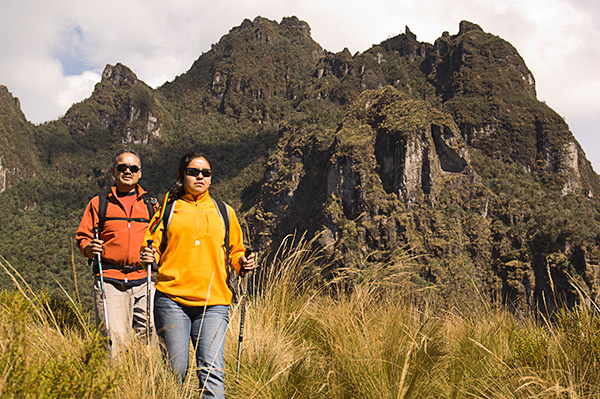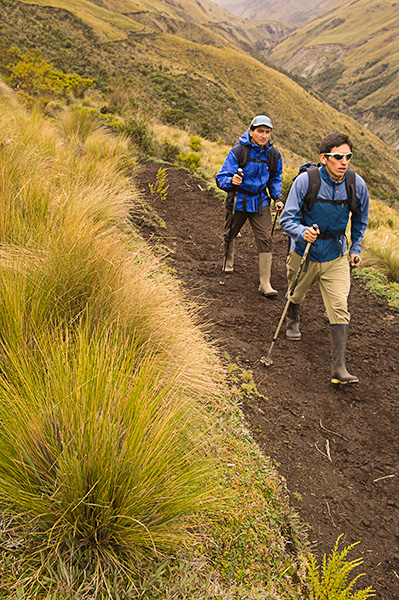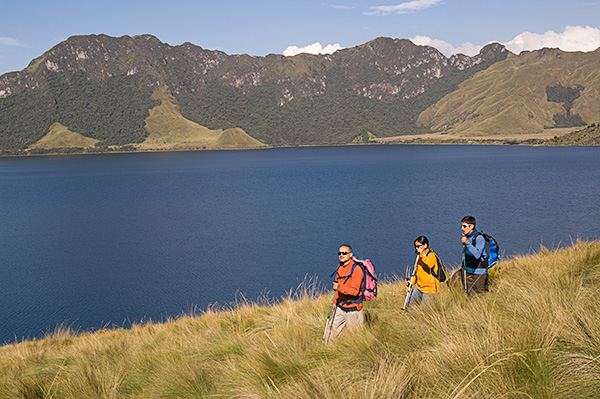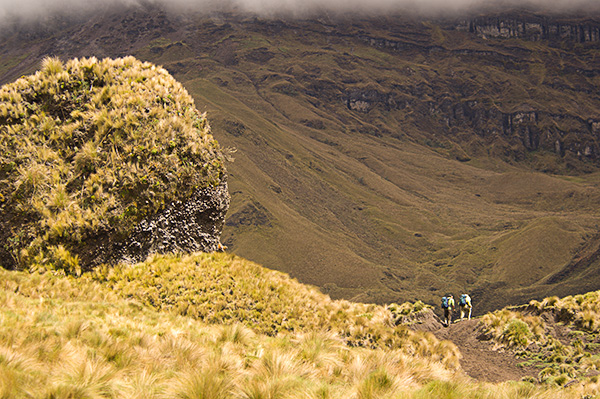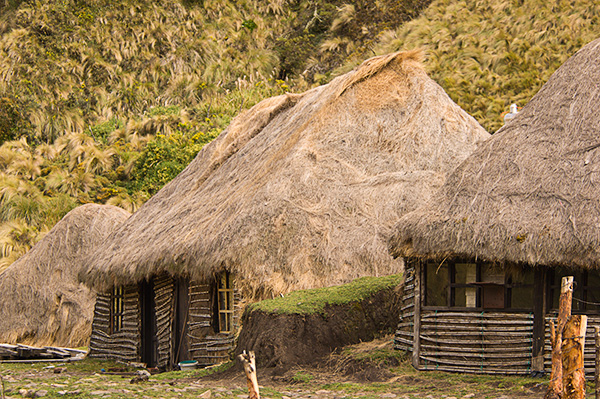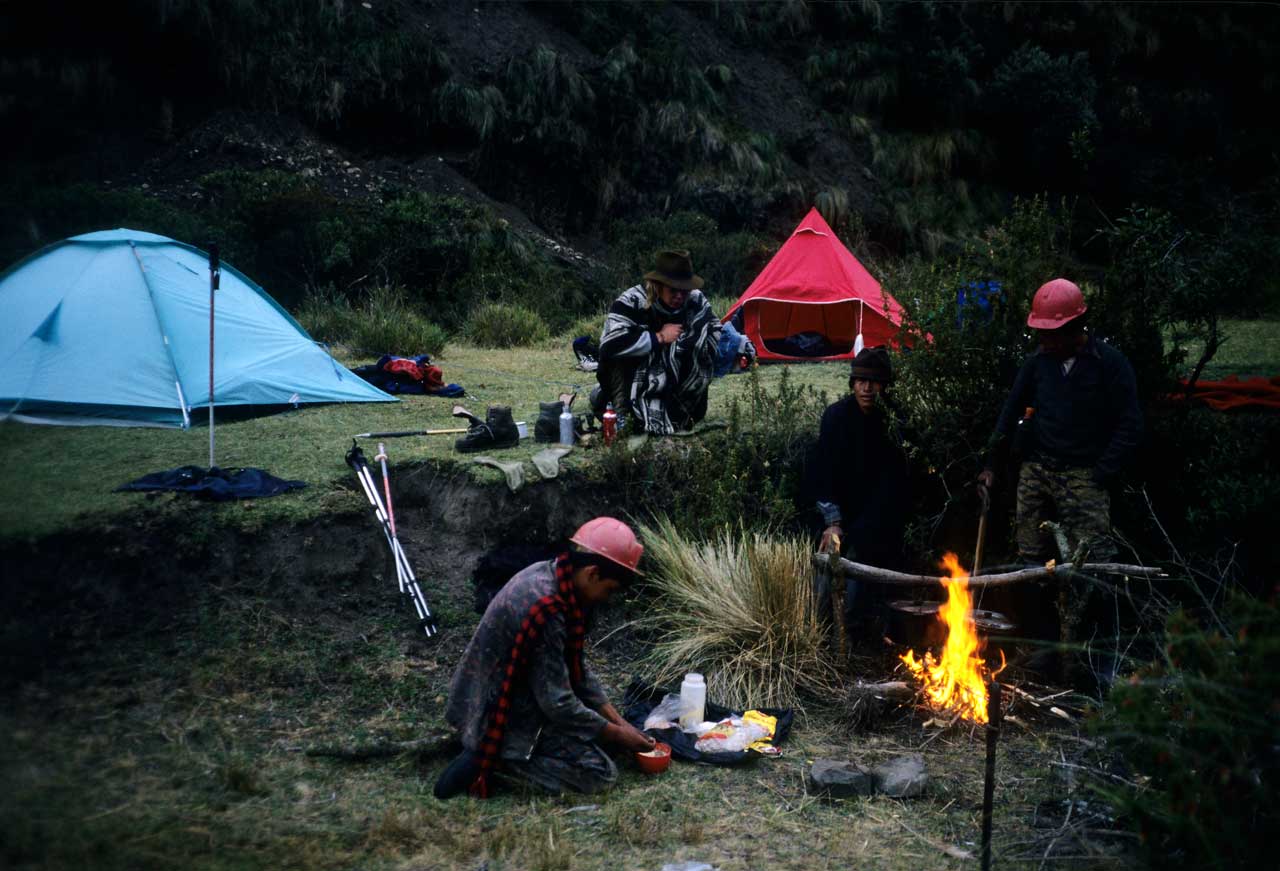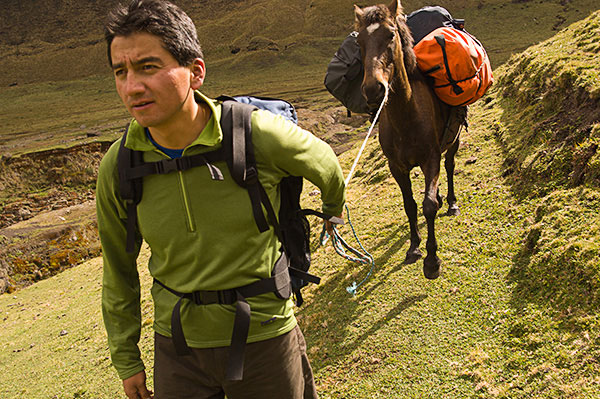Trekking the Chimborazo Loop is one of the most rewarding multi-day adventures in the Ecuadorian Andes. This five-day trek explores the flanks of Chimborazo, Ecuador’s tallest peak, and crosses the broad valley of the Río Mocha. From the very beginning, you will be immersed in high-altitude landscapes, rich ecosystems, and the culture of the Andean highlands.
Flora and Fauna of the Chimborazo Reserve
The Trekking the Chimborazo Loop takes place inside the Chimborazo Fauna Production Reserve, a protected area created to conserve páramo grasslands, glacial lakes, peat swamps, and patches of Andean forest. These ecosystems provide habitat for many species. While walking, you may spot wild vicuñas and guanacos, both native camelids of the Andes. Deer, rabbits, and foxes also roam these highlands. Birdwatchers will enjoy sightings that range from the tiny Ecuadorian Hillstar hummingbird to the majestic Andean Condor.
In addition to wildlife, the Reserve protects a unique variety of plants. Cushion plants, bromeliads, mosses, and colorful flowers add vibrant contrasts to the high-altitude grasslands. You will also find remnants of the ancient Polylepis forests, known as paper trees, which survive only in protected areas because of their historical use for firewood and construction.
The Peaks of Chimborazo and Carihuairazo
At 6,310 m (20,702 ft), Chimborazo dominates the Reserve and offers one of the most impressive views in South America. Because of the Earth’s equatorial bulge, its summit is the farthest point from the planet’s center, making it the closest place to the sun. Just 10 km northeast lies Carihuairazo, a smaller neighbor with a heavily eroded caldera. Its highest peak, Maxim (5,020 m / 16,469 ft), provides a striking contrast to Chimborazo’s massive ice-covered slopes.
Why Choose the Chimborazo Loop
Unlike technical climbing, trekking the Chimborazo loop allows you to experience this incredible region without ice gear. It is the perfect way to enjoy the landscapes of the Andes, acclimate for future climbs such as Cayambe or Cotopaxi, and connect with Ecuador’s natural and cultural heritage.
Plan your trekking in Ecuador with professional guides and discover why this route is considered one of the best long hikes in the Andes.



